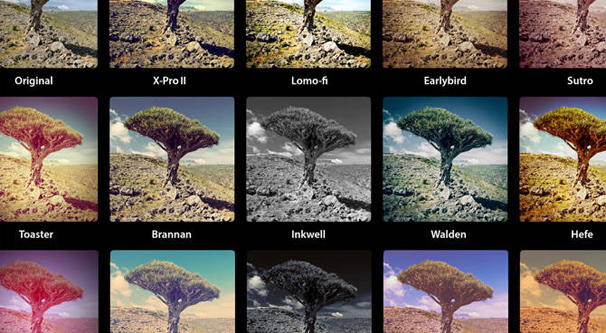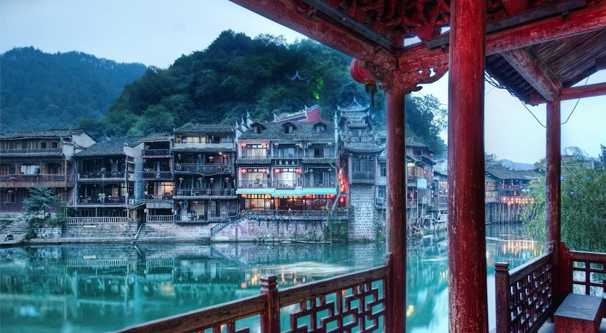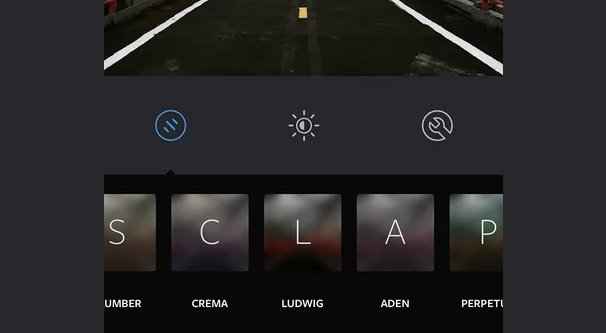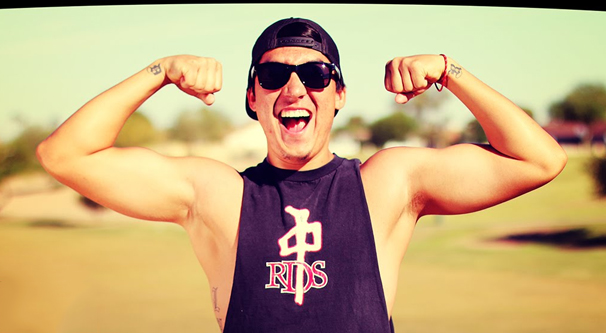Instagram filters are one of those subtle, easy to use tools that can make or break your account. They’re incredibly easy to use, and they’re just as easy to use poorly. How much thought do you put into your filters when you put an image on Instagram? It’s probably not enough.
A lot of businesses I see skip using filters entirely. Sure, there’s an entire #NoFilter movement, and plenty of support for that movement, and plenty of people who just dislike filters in general. Still, unless that’s very precisely your target audience, it’s not necessarily what you want to be doing.
The common theme for these businesses is that Instagram filters are used to hide mistakes and poor quality images. You, as a business, are editing your photos on a powerful desktop machine, after capturing them with a high quality camera; you don’t need filters to hide your mistakes, you have Photoshop.
The reality is, there’s a lot going on with filters that you might not recognize at first glance.
- Filters all come with the ability to use that filter’s name as a hashtag to attract an audience of people who like that filter specifically.
- Filters, yes, hide minor imperfections of an image.
- Filters can enhance the color, contrast, or composition of an image in a specific way engineered by the people at Instagram.
- Filters from a business or other high profile account show the common folk that you’re one of them; they feel more of an attachment, and hope that they too can produce excellent content with the use of simple tools.
Obviously, you should be using filters, though you should avoid over-using filters. If you’re simply in it for the math, though, I’ve gathered up a few reports and studies on filters to figure out a definitive list of the top filters on Instagram.
There are a few things to note here before we begin. They’re big enough points that I’m going to make a big deal out of them.
I’m looking primarily at two different studies. The first is this study by Iconosquare, where they studied the use of filters across nearly 800,000 users around the world, using data from their own platform. The second is a study by Canva, which looked at over a million individual photos and added geographic data. They looked specifically at the hashtags #nature, #fashion, #food, and #selfie. I also included some information from a few other tertiary reports with less rigorous information or older sources.
Different regions have different favorite filters. As you can see from the Canva study, while the #1 most popular filter is the same across all regions in the United States (and most countries in the world), the #2 most popular filter varies by state to state and country to country. The data I’ve accumulated below is mostly for broad generalizations; it may not be specifically the best for your exact audience.
Different subjects have different preferred filters. Canva’s study considered subject, at least as far as looking at the difference in filter preferences across several different topic-based hashtags, and the lists look a little different than what I’ve listed below. For example, filters like Amaro, Brooklyn, and Earlybird are very popular in nature photography, but aren’t on the general top ten list at all. Fashion really likes Kelvin and Nashville, but you don’t see those on the list either.
Normal is the most-used filter. That’s because “normal” isn’t a filter, it’s #NoFilter. Not using a filter is extremely common, but it’s not always the best choice for your posts. Still, remember that even the most popular filter is only use a fraction of the time. Filters are used in something like 15-20% of photos, though the number varies from industry to industry and even varies according to trends.
You’re not limited to Instagram filters. There are other Instagram services out there that have their own range of built-in features. This post covers a lot of them, like VSCO and A Color Story. You can feel free to experiment with these if you like; I’m sticking to Instagram native filters for the purposes of this post.
Additionally, you can always edit a photo and add a filter later, when you upload it. Taking high quality source imagery isn’t mutually exclusive with using filters.
All of that said, what are the most popular filters on Instagram today?
#1: Clarendon
There’s a style of photography called HDR, or High Dynamic Range photography. It tends to create very striking images with a lot of contrast between light and dark. Grime is grimier, shine is shinier, colors are more vibrant, and everything stands out in an almost surreal way. You can see some examples here.
Clarendon is a sort of “baby’s first HDR” in filter form. It makes lights lighter, darks darker, and adds a slightly cooler tone to most images, generally increasing contrast. HDR is an extreme, while Clarendon is more subtle, but it turns basic images into something that’s immediately visually more striking.
Clarendon is the most popular filter because it doesn’t inherently change the tone of an image; it’s an enhancement without an adjustment. Almost everyone loves it, and once you know how to spot it, you’ll never be able to un-see it.
Also, Clarendon is the first filter after Normal, and so it’s easy to hit and use without needing to look for something that fits your image better. Maybe ease of use is one reason why it’s universally so popular.
#2: Juno
Juno is similar to Clarendon in many ways; it increases contrasts and it makes colors more vibrant. The cool shades in your images turn cooler, but the warmer shades also turn warmer. It’s more of a boost to both brightness and contrast, without the high levels that those manual adjustments would leave an image looking washed out.
Juno is generally a good option when you want to showcase the color in your image, particularly if there’s a strong contrast in color. Flower photos, for example, stand out between the foliage of a plant and the color of a bloom.
#3: Ludwig
Ludwig is not named after the composer, but rather after the architect Ludwig Mies van der Rohe, famous for minimalism. If you’ve ever heard “less is more” come out of someone at an inappropriate time, you can blame old Ludwig here.
The Ludwig filter works well for making warm colors pop, most specifically images where red is the color you want to focus on. It reduces the saturation of basically every other color, and works well for portraits because of the inherent red in skin.
#4: Lark
Lark is a commonly used filter for outdoor photography, particularly in spring and summer. It boosts the brightness of a photo without making it look washed out. In contrast to Ludwig, Lark reduces the saturation of reds while bumping up blues and greens. This makes the natural contrast in foliage stand out quite a lot, and makes it excellent for nature photography. It’s less useful for autumn photography, though, and can increase brightness in a way you might not want for warmer images.
#5: Gingham
If you were to describe Gingham in one word, it would probably be “Gingham.” If you had to pick a word that wasn’t its name, you’d go with something like “vintage.” This particular filter tones down the colors in your photo, both in saturation and in highlights, giving it that patina of gray haze that is characteristic of old vintage film photography. It’s not going to take you all the way to tintype photos, but it can make a modern digital snap look more like an old Polaroid. Keep in mind that the slight haze this adds to your image will muddle some details, so very detailed images will suffer for it.
#6: Lo-Fi
Lo-Fi is a very dramatic filter. It’s like Clarendon on steroids, and is closer to the effect you get out of HDR photography than any filter on this list thus far. It dramatically increases saturation, making your darks darker and your lights lighter, with more vibrant color in between. This is best used when you want to showcase the contrast of an image without sacrificing the clarity of the colors within it.
I will say that as HDR photography has reached a peak of misuse, Lo-Fi has receded in popularity. People loved HDR when it first hit the scene, but it has been somewhat played out, and as such, the various HDR-spinoffs like this filter are losing popularity. That’s why Clarendon is so popular; it’s close to HDR while still being a subtle enhancement, rather than a dramatic change.
#7: Valencia
While thinking of Valencia, you might think of the orange, but that only gets you halfway there. Indeed, Valencia does enhance warmer colors, but it does so primarily with yellow. It basically adds a yellow tinge to your photos, which has the side effect of brightening up greens while giving a strange sort of hue to whites with red on them. I figure this is a tricky filter to use well. When you use it properly, it makes pastel and light-colored images pop. Used poorly and it’s more reminiscent of a smoker’s lounge.
#8: Aden
What Gingham is for vintage, Aden is for retro. Vintage photography heralds back to the 40s or 50s, while retro photography is more of the 60s and 70s, at least in my casual impression. I am by no means a scholar of photography.
Aden makes an image softer and adds a bit of brown to it. It tends to tone down images, particularly those with bold colors. You know that phase at the end of autumn, when winter is on the cusp of breaking, the colors are fading, but not everything is cold and dead just yet? That’s the sort of feeling that Aden invokes.
#9: X-Pro II
This pro filter is an extreme increase in contrast with a lot of enhanced shadow and a shadowy fade to the corners of your image. It’s not a subtle filter. It’s not a minor color adjustment. In fact, I almost don’t classify this as a filter at all; it’s more of an effect you layer on top.
The original purpose of this filter, which is one of the oldest on Instagram, was to make a dramatic change to the image to correct for poor phone cameras that were the most common means of capturing images for your profile. It adds intensity while helping to wash away artifacts stemming from low quality captures.
Other Mentions
Some other filters are popular in certain niches without being a blip on the most popular radar.
Brooklyn is a popular filter for nature scenes and is often used for cityscapes, mountain photography, and the generally cooler outdoors. It adds a bit of a reddish tinge to images which, in winter colors, means a purple haze over the photo. It can be quite striking and is commonly seen on album art for certain music genres.
Amaro is a similar filter that adds a heavy blue tint to the images and is also commonly used in nature photography. Think of it like Brooklyn but for blue instead of red.
Kelvin is a filter that enhances contrast while making details stand out, and is very commonly used in fashion photography. One of its best features is the ability to highlight clothing and jewelry without detracting from skin or hair.
Skyline is possibly the most commonly used filter for food photography. It enhances colors without making food look sickly or unnatural, which would drive people away in an instinctive urge to distance oneself from potentially dangerous food.
Slumber is a commonly used filter for selfies, though most people post NoFilter selfies these days. It’s a good filter to even out skin tone and correct for poor lighting, making photos of a face pop a bit more than the otherwise would.











